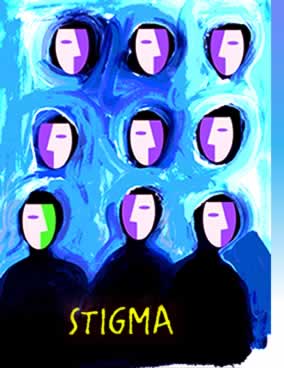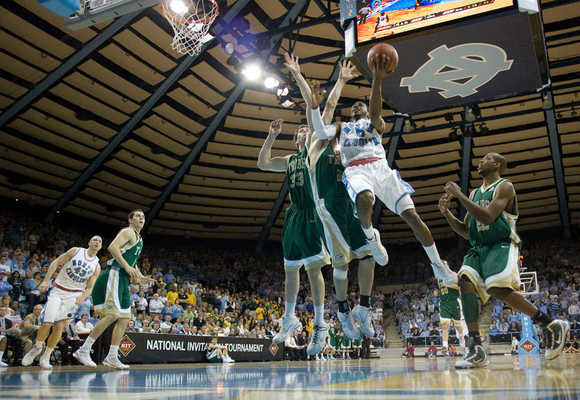What Should the NCAA Do With Its Four Little PiGs?
Posted by rtmsf on May 4th, 2010This has been discussed repeatedly since the late April announcement that the NCAA Tournament would be moving to a 68-team design beginning in 2011, but we’ve yet to come across a piece that outlines all of the iterations that the new four-PiG format might take. Hashing it out on the phone with The Kiff (a longstanding member of the Cult of 64) last weekend, we ultimately settled on two major bones of contention — who gets to play in the four play-in games, and how do you structure it so as to maximize interest, revenue and bracketing? We’ll discuss each of these questions in turn, but first, it’s interesting to read a quote from one prominent member of the NCAA Selection Committee for insights as to what may or may not be on the table here. Laing Kennedy, the Kent State athletic director who will finish up a five-year term as a member of the NCAA Selection Committee, has this to say about it:
Going from 65 to 68 means four first-round games. Our committee, when we meet in May, will look at some models on how to bracket that. For example, you can have two afternoon and two night games in Dayton, or two games at two different sites. But the big question to be decided by the committee is which teams should play those play-in games, and how the winners will be seeded into the field. Speaking individually, I would look at the last eight, and rewarding the AQs [automatic qualifiers]. Those would be highly competitive first games. But those are things we have to look at in May.
Additionally, Greg Shaheen, the NCAA Senior Executive VP who got lit up by the media in the week leading up to the Final Four, said during a radio interview with Doug Gottlieb recently that all options are on the table with respect to logistics but one of the primary considerations of the committee in structuring the new games will be to remove some of the stigma from them. A noble endeavor, indeed.
With the hope that reasonable minds ultimately will prevail, here are our thoughts on the matter.
Who Plays In It?
This is the part most fans care about, and with good reason — they want to know whether as standard practice they can continue to ignore PiG Tuesday. As it currently stands, roughly 99.9% of America* fails to so much as recognize that there is a Tuesday night game ostensibly involving NCAA Tournament opponents. Only the truly anal among us wait until Wednesday to fill out our bracket on the ridiculous off chance that the winner of the PiG is the “right” matchup to give its corresponding #1 team trouble (and you know who you are). So let’s cut right to it. For the last ten seasons, there have been only four groups of people who care about this game.
* unscientific sampling of the three guys walking around the office hallway
-
#16A’s fans, players and families.
-
#16B’s fans, players and families.
-
Overly nervous fans of the corresponding #1 seed waiting on an opponent for Friday’s #1/#16 game.
-
The good citizens of Dayton, Ohio, who keep attending this thing year after year.
Just about six weeks ago, we saw this played out in real time as the “Opening Round” of the NCAA Tournament between Arkansas-Pine Bluff-Winthrop competed directly with the first round of the NIT and several interesting matchups that included UConn-Northeastern, UNC-William & Mary, Texas Tech-Seton Hall and NC State-South Florida. From that night’s ESPN coverage to the trending Twitter topics and later to the Nielsen ratings, it was painfully clear that on this mid-March evening, the NIT games were the preferred matchups for college hoops fans. As anyone working at 700 West Washington Street in Indianapolis is surely aware, that should NEVER happen. Even on its worst night, for an NCAA Tournament game to be overshadowed by another basketball-related sporting event in March should be an impossible achievement, and yet on that particular evening it was not.
And therein lies the problem. Most people, even hardcore college hoops fans like us, don’t consider the Tuesday night PiG to be a legitimate part of the NCAA Tournament. It involves the two worst-rated teams in the field, which means nobody knows anything about them; and it has zero impact on our brackets, which means there’s no corresponding reason to care to learn about them either. So the question for the NCAA becomes: how do you legitimize it? How do you remove that stigma that Shaheen mentioned as problematic? How do you make people care about the (now) four play-in games on Tuesday so that random NIT games involving struggling national powers don’t take priority over NCAA games on the sports page? Here are the two viable alternatives as we see them.
Status Quo (x4)
Keeping things as they are now where the #16s play the ‘other’ #16s (or possibly #17s in the new scheme) wouldn’t seem to do much to enhance the legitimacy of the PiGs, but there is precedent for this. From 1978 to 1985, the NCAA Tournament doubled in size from 32 to 64 teams (can you imagine the outcry in today’s environment??). There were several fits and starts along the way as it expanded a little more almost every year in-between, but suffice it to say that in 1983, the NCAA invited 52 teams to the ball with the final eight automatic qualifiers slotted as #12 seeds into four play-in games (or the “preliminary round” as they called it then). In 1984, there were five play-in games with an additional #11 seed added to the mix. In both of these years, all of the play-in games were played on the Tuesday prior to the first round games, and the teams were sent to PiG sites of Philadelphia’s Palestra or Dayton’s UD Arena depending on relative proximity to the school(s) involved. The winners advanced to play #5 seeds in the true “first round,” with the one exception of the #11 seed (Northeastern) in 1984 who played a #6 seed in that round.











































